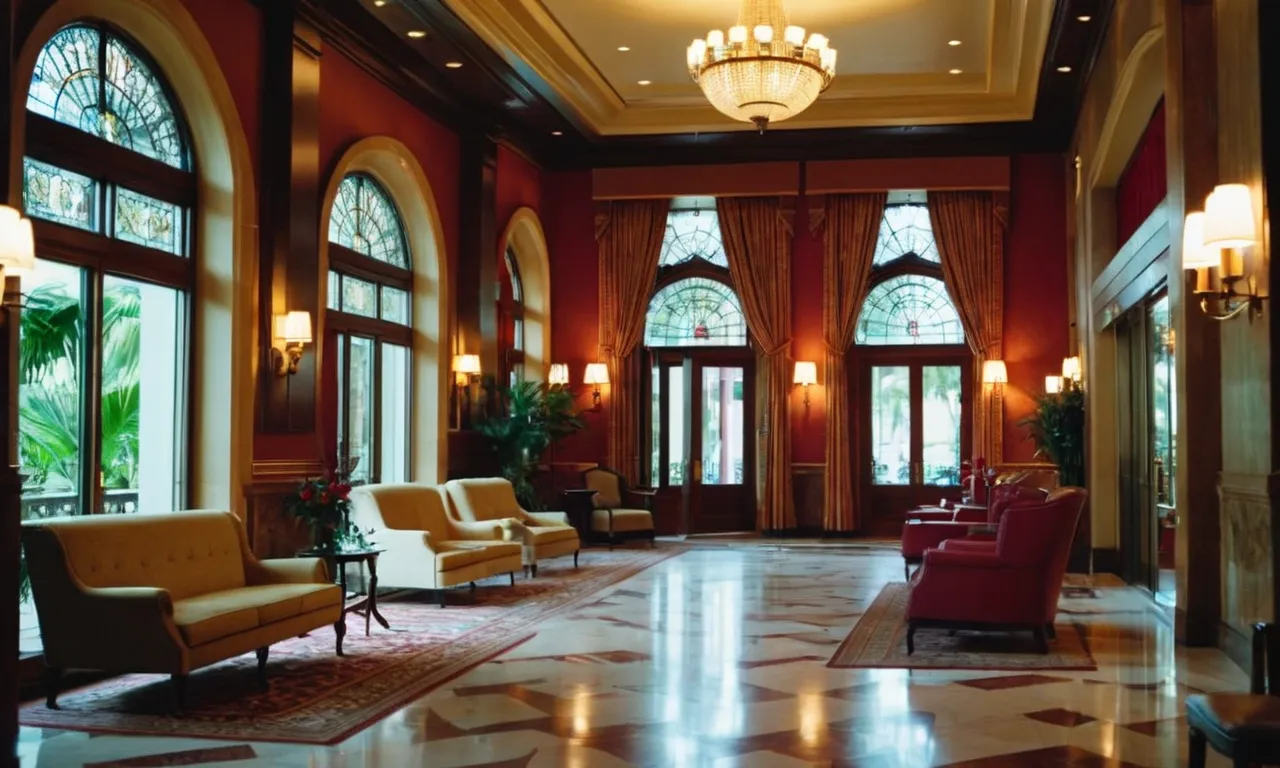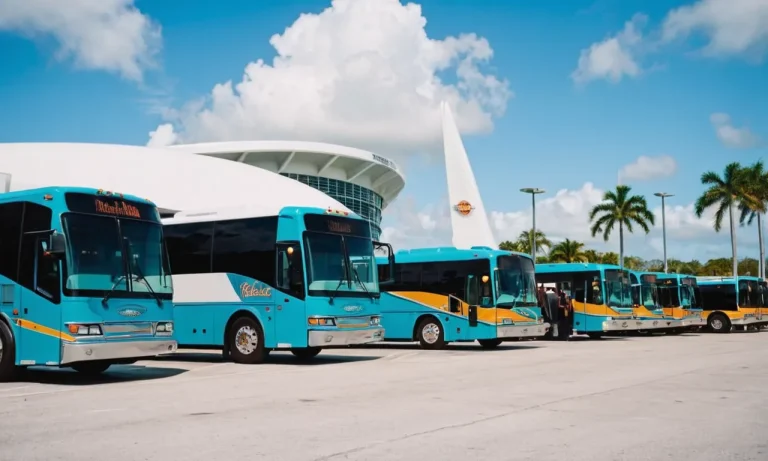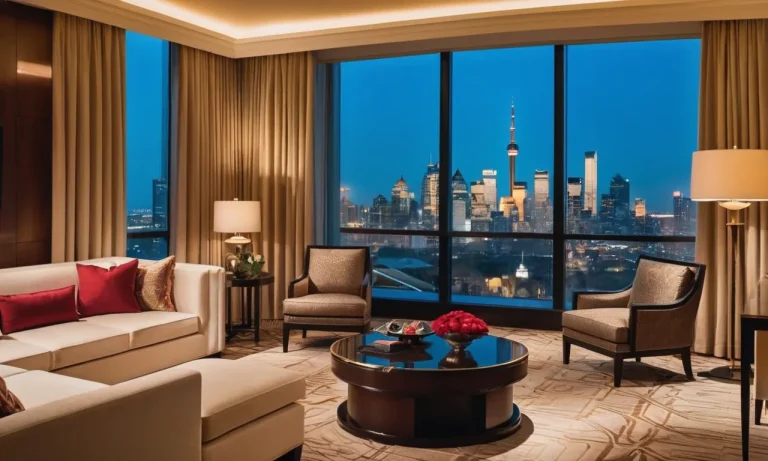What Affects Hotel Occupancy: A Comprehensive Guide
In the ever-evolving hospitality industry, understanding the factors that influence hotel occupancy rates is crucial for success. Whether you’re a hotelier, investor, or simply curious about the dynamics of this sector, this article delves into the intricate web of elements that shape the demand for hotel rooms.
If you’re short on time, here’s a quick answer to your question: Hotel occupancy rates are influenced by a multitude of factors, including location, seasonality, economic conditions, marketing strategies, online reputation, and the overall guest experience.
In this comprehensive guide, we’ll explore each of these factors in depth, providing valuable insights and actionable strategies to help you navigate the complexities of the hotel industry. From leveraging the power of online reviews to capitalizing on seasonal trends, we’ll cover it all, ensuring you have a thorough understanding of what drives hotel occupancy.
Location: The Cornerstone of Hotel Occupancy
When it comes to the success of a hotel, location is undoubtedly the cornerstone that determines its occupancy rates. A prime location can make or break a hotel’s ability to attract guests, regardless of its amenities or services.
After all, convenience and accessibility are key factors that travelers prioritize when choosing their accommodation.
Proximity to Attractions and Business Hubs
One of the most significant advantages of a well-situated hotel is its proximity to popular attractions, tourist destinations, and business hubs. Guests, whether leisure or corporate travelers, are more likely to choose a hotel that is within walking distance or a short commute from the places they want to visit or conduct business.
According to a study by TripAdvisor, over 60% of travelers consider a hotel’s location as the most important factor when booking accommodation.
Transportation Accessibility
Another crucial aspect of a hotel’s location is its accessibility to various modes of transportation. Guests appreciate the convenience of being near major airports, train stations, or public transportation hubs, as it simplifies their travel plans and reduces the need for expensive taxi or rental car services.
A hotel located near major highways or with easy access to ride-sharing services can also be a significant advantage, especially for business travelers or those attending events in the area.
Surrounding Amenities and Neighborhood
Beyond just proximity to attractions and transportation, the surrounding amenities and neighborhood also play a vital role in a hotel’s occupancy rates. Guests often seek accommodation in areas with a vibrant atmosphere, offering a variety of dining options, shopping centers, and entertainment venues within walking distance.
According to a survey by Expedia, 72% of travelers consider the availability of restaurants and shops in the surrounding area when choosing a hotel. Additionally, the safety and character of the neighborhood can greatly influence a guest’s perception and overall experience.
Seasonality: Riding the Wave of Demand Fluctuations
The hotel industry is a dynamic landscape, with occupancy rates ebbing and flowing like the tides, influenced by a myriad of seasonal factors. Understanding these fluctuations is crucial for hoteliers to navigate the ever-changing market and maximize revenue potential.
From peak travel seasons to event-driven demand surges and even weather patterns, each element contributes to the intricate tapestry of hotel occupancy.
Peak and Off-Peak Seasons
Every destination has its own unique rhythm, with peak seasons characterized by an influx of travelers seeking to experience the best that the locale has to offer. According to STR Global, a leading provider of data benchmarking and analytics for the hospitality industry, summer months tend to be the busiest for many destinations, particularly those offering warm weather and outdoor activities.
However, the peak season can vary based on factors such as location, cultural events, and school calendars. For instance, ski resorts often experience their highest occupancy rates during the winter months, while beach destinations thrive in the summer.
Conversely, off-peak seasons present a different set of challenges, with lower demand and occupancy rates. However, savvy hoteliers can leverage this opportunity to attract budget-conscious travelers with enticing promotions and discounted rates.
It’s a delicate balance between maintaining profitability and keeping rooms occupied during these slower periods.
Event-Driven Demand
Beyond the traditional peak and off-peak cycles, hotels can experience surges in demand driven by special events and occasions. Conferences, conventions, festivals, and sporting events can all contribute to a spike in occupancy rates.
According to a report by Eventbrite, a leading event management platform, the global event industry was valued at $1.1 trillion in 2018 and is expected to grow at a compound annual rate of 11.2% through 2028. This underscores the significant impact events can have on the hospitality sector.
Hoteliers who stay ahead of the curve by monitoring and anticipating these events can capitalize on the increased demand by adjusting their pricing strategies and offering tailored packages. It’s a win-win situation – events bring in guests, and hotels provide convenient accommodations for attendees.
😊
Weather Patterns and Climatic Influences
While some seasonal factors are predictable, others can be more unpredictable, such as weather patterns and climatic influences. Extreme weather conditions, natural disasters, or even unexpected heatwaves or cold snaps can significantly impact hotel occupancy rates.
According to a study by McKinsey & Company, a leading global management consulting firm, hotels in coastal regions can experience a 10-15% drop in occupancy rates during hurricane seasons.
Proactive hoteliers stay informed about weather forecasts and trends, adjusting their strategies accordingly. This could involve offering discounted rates during periods of unfavorable weather or promoting indoor amenities and activities to attract guests seeking shelter from the elements.
Ultimately, being nimble and adapting to Mother Nature’s whims can help mitigate the impact of weather-related occupancy fluctuations.
Economic Conditions: Navigating the Tides of Prosperity
The hotel industry is inextricably linked to the ebb and flow of economic conditions, both locally and globally. When economies are thriving, businesses expand, and consumers have more disposable income, leading to increased travel and higher hotel occupancy rates.
Conversely, during economic downturns, travel budgets tighten, and discretionary spending declines, impacting hotel demand. Understanding these economic forces is crucial for hoteliers to navigate the tides of prosperity effectively.
Consumer Spending and Disposable Income
Consumer spending and disposable income are key drivers of leisure travel demand. As disposable incomes rise, consumers are more likely to splurge on vacations, weekend getaways, and other travel experiences. According to a report by the U.S.
Travel Association, every 1% increase in real disposable income leads to a 0.5% increase in leisure travel demand. 😊 However, during economic recessions or periods of high inflation, disposable incomes shrink, and consumers tend to cut back on non-essential expenses like travel, directly impacting hotel occupancy rates.
Corporate Travel Budgets
Corporate travel is a significant revenue stream for many hotels, particularly in urban centers and business districts. Companies allocate budgets for business travel, conferences, and events based on their financial performance and economic outlook.
In prosperous times, when businesses are thriving, corporate travel budgets tend to be more generous, leading to higher demand for hotel rooms. However, during economic downturns or periods of cost-cutting, companies often tighten their travel budgets, resulting in reduced demand for hotel accommodations.
According to a study by the Global Business Travel Association, corporate travel spending is projected to grow by 7.3% in 2023, indicating a positive economic outlook for the hotel industry.
Currency Exchange Rates and Global Economic Trends
For hotels catering to international travelers, currency exchange rates and global economic trends play a crucial role in occupancy levels. A strong local currency can make a destination more expensive for foreign visitors, potentially deterring travel and impacting hotel demand.
Conversely, a weaker local currency can make a destination more attractive and affordable for international travelers, boosting hotel occupancy rates. 👏 Additionally, economic conditions in key source markets can influence travel patterns and hotel demand.
For instance, a recession in a major source market could lead to a decline in outbound travel, affecting hotel occupancy in popular destinations.
To navigate these economic tides successfully, hoteliers must stay attuned to economic indicators, consumer sentiment, and global trends. By understanding the intricate relationship between economic conditions and hotel occupancy, they can make informed decisions about pricing strategies, marketing campaigns, and operational adjustments to maximize revenue and maintain a competitive edge in a dynamic market environment.
Isn’t it amazing how economic forces shape the hospitality landscape? 😍
Marketing Strategies: Capturing the Attention of Travelers
In the ever-competitive hospitality industry, effective marketing strategies play a pivotal role in attracting and retaining guests. With travelers bombarded by countless options, hotels must leverage innovative techniques to stand out and capture the attention of their target audience.
From establishing a robust online presence to leveraging the power of social media, successful marketing strategies are the key to boosting occupancy rates and driving revenue.
Online Presence and Digital Marketing
In today’s digital age, having a strong online presence is non-negotiable for hotels. According to TravelClick’s Hospitality Digital Marketing Trends and Statistics, over 70% of travelers research and book their accommodations online.
To capture this massive audience, hotels must prioritize their digital marketing efforts. This includes optimizing their website for search engines, utilizing pay-per-click advertising, and maintaining an active presence on popular online travel agencies (OTAs) like Booking.com and Expedia.
Targeted Promotions and Loyalty Programs
Personalized marketing campaigns and loyalty programs can be powerful tools for attracting and retaining guests. By leveraging data analytics and customer segmentation, hotels can tailor their promotions and offers to specific target audiences.
For instance, offering discounts or packages tailored to families during school breaks or promoting romantic getaways during peak holiday seasons. Additionally, well-designed loyalty programs incentivize repeat business and foster customer loyalty, ultimately boosting occupancy rates.
According to McKinsey & Company, hotels with effective loyalty programs can achieve up to 20% higher occupancy rates compared to those without such programs.
Leveraging Online Reviews and Social Media
In the age of digital word-of-mouth, online reviews and social media play a crucial role in influencing travelers’ decisions. Positive reviews on platforms like TripAdvisor and Google Travel can significantly boost a hotel’s visibility and credibility, ultimately driving bookings.
Conversely, negative reviews can deter potential guests. Therefore, hotels must actively monitor and respond to reviews, addressing concerns promptly and professionally. Additionally, leveraging social media platforms like Facebook, Instagram, and Twitter can be an effective way to showcase the hotel’s unique offerings, engage with potential guests, and foster a sense of community.
According to Revinate’s Hospitality Trends and Statistics, 92% of travelers consider online reviews when booking accommodations, highlighting the immense impact of online reputation management.
Conclusion
Mastering the art of hotel occupancy requires a deep understanding of the multifaceted factors that shape demand. From the strategic location and seasonal trends to economic conditions and innovative marketing strategies, each element plays a pivotal role in attracting guests and maximizing occupancy rates.
By leveraging the insights and strategies outlined in this comprehensive guide, hoteliers can navigate the complexities of the industry with confidence. Whether it’s capitalizing on peak seasons, adapting to economic shifts, or harnessing the power of online reviews, a holistic approach is key to achieving sustainable success.
Ultimately, the pursuit of optimal hotel occupancy is an ongoing journey, one that demands continuous adaptation, innovation, and a relentless commitment to delivering exceptional guest experiences. Embrace the challenges, seize the opportunities, and let this guide be your compass as you chart your course towards occupancy excellence.








